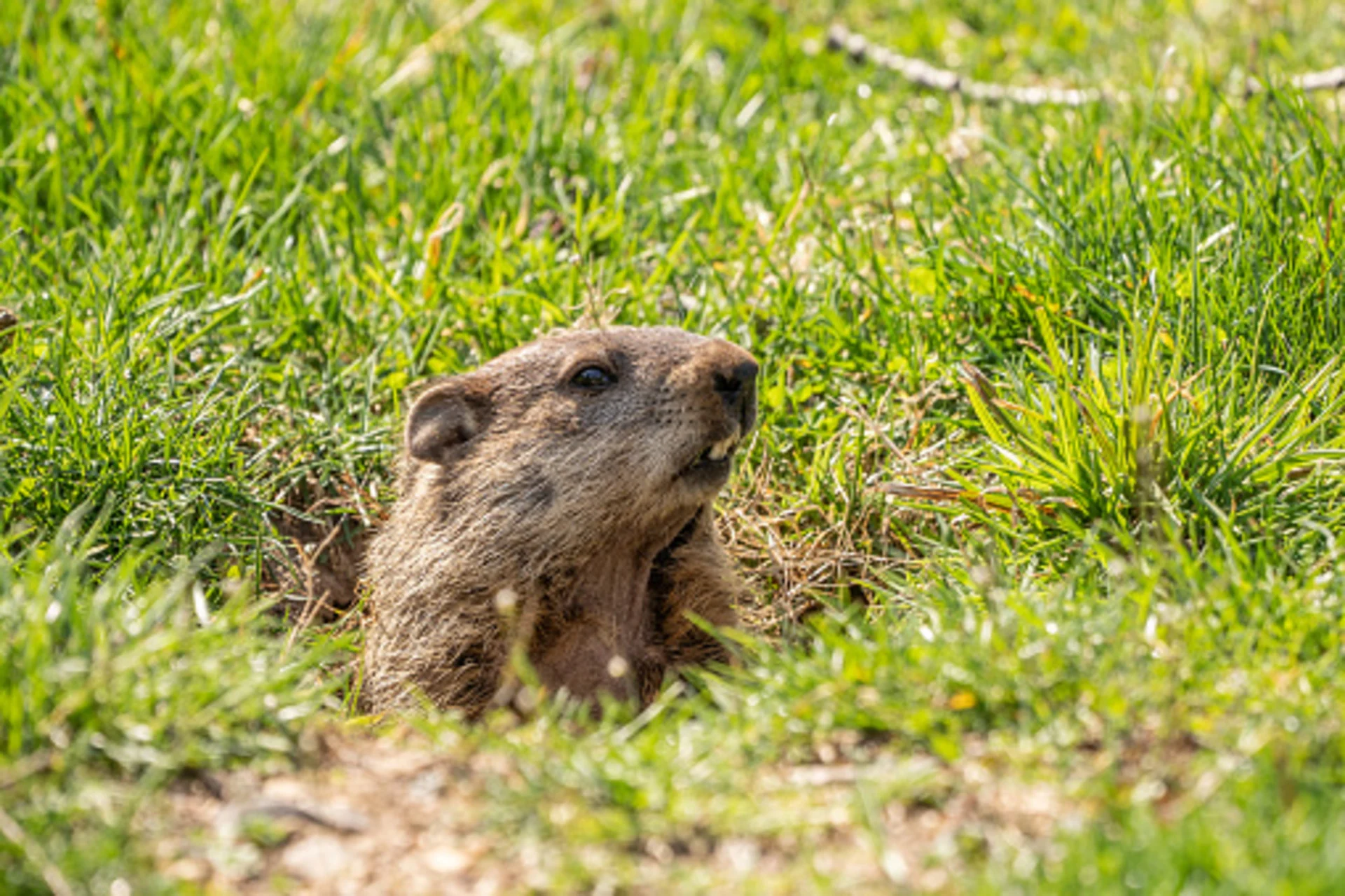
Groundhog Day: the truth about these furry forecasters
For the human celebrants of Groundhog Day, everything depends on whether the animal is spooked by its own shadow.
The groundhog has evolved into a winning combination of cute and ungainly. This burrowing squirrel may resemble a furry cube with a leg at each corner, but do not be deceived by its bumbling, hapless charms: this is a Nostradamus of the animal world. In North American folklore, the groundhog can apparently be used to foresee the future, as many a town in the US and Canada will vouch on February 2 as they celebrate Groundhog Day.
Groundhogs are great diggers and spend much of their time hunkered down in their burrows – understandably since they feature in far too many food webs. They’re among nature’s “true hibernators”, and become fully dormant for much of the winter.
This period, so the story goes, is broken on February 2 when they emerge from their burrows. For the human celebrants of Groundhog Day, everything depends on whether the animal is spooked by its own shadow. If it is cloudy, the hogs stay out and about and spring will come early. But if the sun shines brightly and the groundhogs catch sight of their own shadow, they flee back underground, and winter will apparently return for another six grim weeks of ice and rain.
WATCH: A look back at Groundhog Day predictions across Canada
Some groundhogs really do wake up from hibernation in early February, while the weather is still very cold, before going back to bed until March. However, this has nothing to do with scary shadows.
Their early emergence is primarily down to males checking out the whereabouts of neighbouring females with an eye towards amorous opportunities later in the spring. Given this, jumping back into your burrow at the slightest hog-shaped silhouette might not be the best reproductive strategy.
In some European traditions, the weather on February 2 has a similar significance, but without the groundhogs. In the north of America, the hogs are essential, perhaps an evolution of Germanic folklore imported by immigrants who became the Pennsylvania Dutch (from the German: Deutsch). The custom spread, and today many towns have annual ceremonies.
There are even celebrity groundhogs, with their own entourage of handlers. After all that time underground, you might expect a dazzled groundhog would be spooked by anything, especially a fan club of oddly dressed town elders.
Meanwhile “Groundhog Day” has entered the popular lexicon in the wake of the 1993 film of the same name in which a pompous weather forecaster arrives in town to deride the locals’ affection for their fortune-telling rodents, only to find himself trapped in a time loop, the day repeating itself until he is redeemed by love.
Further south in the US, a menagerie of other species has acquired this remarkable gift of prescience, including coypu and crayfish.
However, among planet Earth’s fortune telling fauna the groundhogs’ weather forecasting is tame. The US National Centre for Environmental Information has investigated Punxsutawney Phil, the most famous groundhog of all, and found his forecasts show “no predictive skill”.
Impress every single one of your friends on Groundhog Day, watch this:
RELATED: What's the deal with Groundhog Day?
In recent years, the football futurology talents of Paul the octopus has attracted particular acclaim. Paul, who lived in a Sea Life Centre in Germany, correctly predicted four of six matches in Euro 2008, then seven of seven in 2010. Statisticians were consulted and, understandably, weren’t sure what to make of this, probably because all the octopuses that were not so on the ball were not being recorded.
After Paul’s death, an imitator, Otto, tackled not only football but eventually the UK’s Brexit referendum. Sadly, her football punditry proved poor and her career ended with a whole-hearted, or, more precisely for an octopus, whole-three-hearted, prediction of a victory for Remain.
Maybe we’re better off sticking with groundhog forecasts.
Mike Jeffries, Teaching Fellow, Ecology, Northumbria University, Newcastle
This article is republished from The Conversation under a Creative Commons license. Read the original article.

Thumbnail credit: Getty Images/arlutz73. Stock photo.










